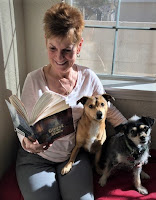“10 Publishing Myths, Insights Every Author Needs to Succeed” by W. Terry Whalin
Published by Morgan James Publishing, Morgan James
“10 Publishing Myths, Insights Every Author Needs to Succeed” is a must read for writers no matter where you are in your writing career. Each Myth is real and presented in an inspiring move forward, practical argument, from a writer who’s been there.
Some of my favorite parts include:
1. Take responsibility for your work,
2. Create your own marketing plan and make it happen,
3. A great way to start out publishing your work is to write for magazines,
4. Every time you connect with an editor or agent you are making an impression—make it a good one!
W. Terry Whalin gives helpful recommendations and references to further your writing career. He talks about growing your skills by making a commitment to study the craft of writing by reading how-to books consistently, month by month. Take the long view of success, little steps to promote your writing and yourself over time.
I recommend this book for every writer and aspiring author.
It is loaded with practical tips and actionable direction.
Thank you, W. Terry Whalin for providing me a review copy of “10 Publishing Myths, Insights Every Author Needs to Succeed”. I was not required to write a positive review, I receive no compensation, and it was my choice to write this review. All comments and opinions are solely my own.
Find Terry’s Books:
Amazon: https://www.amazon.com/10-Publishing-Myths-Insights-Succeed/dp/164279452X
Goodreads: https://www.goodreads.com/book/show/48921823-10-publishing-myths-insights-every-author-needs-to-succeed
W. Terry Whalin is an acquisitions editor at Morgan James Publishing. He has written for over 50 magazines and more than 60 books with traditional publishers. His latest book for writers is Book Proposals That $ell (the revised edition) released to online and brick and mortar bookstores. Jim Cox, Editor-in-Chief at Midwest Book Review wrote, “If you only have time to read one ’how to’ guide to getting published, whether it be traditional publishing or self-publishing, “Book Proposals That Sell” is that one DIY instructional book.” You can get a free Book Proposal Checklist on the site. He lives in Colorado and has over 190,000 twitter followers.
Deborah Lyn Stanley is an author of Creative Non-Fiction. She writes articles, essays and stories. She is passionate about caring for the mentally impaired through creative arts.
Visit her My Writer’s Life website at: https://deborahlynwriter.com/
Visit her caregiver’s website: https://deborahlyncaregiver.com/
Share on LinkedIn
https://www.linkedin.com/
And more via the icon bar below:




















